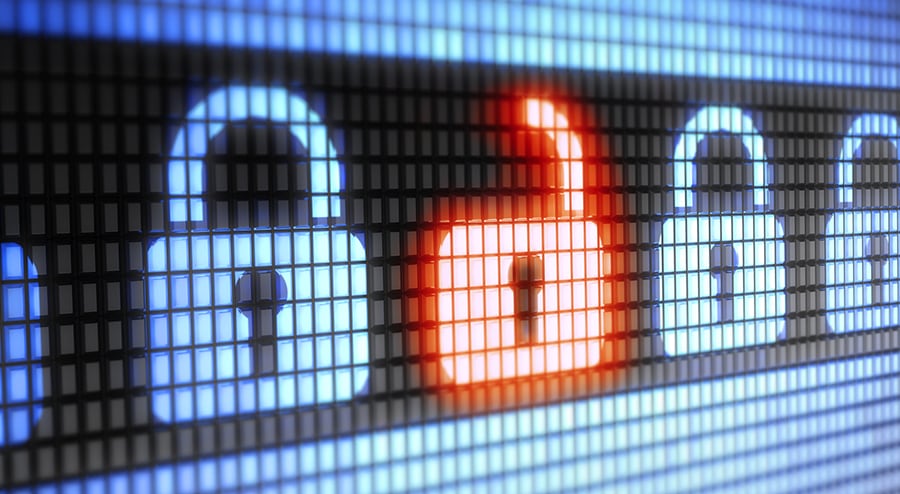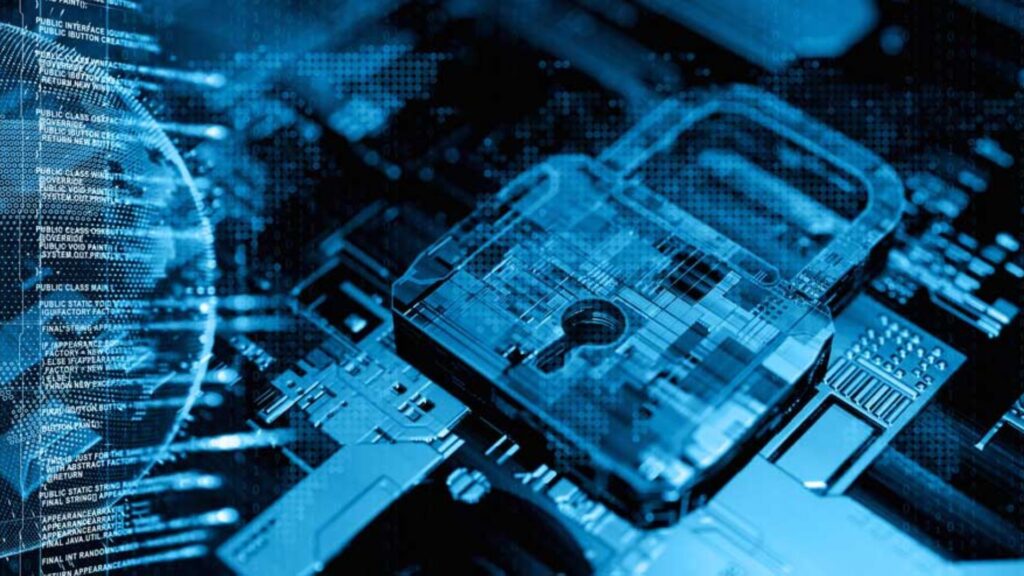Most families own a computer for work, educational studies, and/or recreational use. According to the United States Census Bureau, in 2013, 84 percent of households owned a computer, with 73 percent of those computers having a broadband connection to the Internet.
These numbers are higher today. Despite what the computer’s use is for, it is at risk of being involved in a cyber attack. Even if you’re using the latest version of Windows and decent security software, hackers can destroy the computer with malicious software to the point where there is no choice but to purchase a new one.
They can also retrieve sensitive information such as banking information. Everyone wants to avoid a cyber attack, no matter how small it may be.

Small infiltrations pave the way for larger scale attacks to take place. Fortunately, experts have weighed in on all the measures computer users can take to protect their computer from various types of cyber attacks.
Types Of Internet Security Risks
Whether using Windows or the latest version of iOS, if a computer is connected to the Internet and a browser like Internet Explorer or Google Chrome, it is automatically vulnerable to a cyber attack.
Software with ill intent to damage or destroy a computer is called malware (malicious software). This is a general term that covers all the types of cyber attacks that can occur.
Cyber attacks can go unnoticed, causing damage while the user is using the internet without a clue that malware is collecting data. Malware mainly includes stealing sensitive information like credit card info and identity theft.
According to the website Hackmageddon (Information Security Timelines and Statistics), as of September 2017, 31.6 percent of cyber attacks were done through malware and POS malware (point-of-sale).
POS malware specifically targets payment data such as credit card information. 28.9 percent of cyber attack victims were individuals, ranking the highest above industries, the government, and healthcare.
All malware is unwelcomed and causes some degree of harm. However, there are certain types of malware that cause more damage than others, It is important to understand them and what they do to a computer. Awareness of the first step to preventing these attacks.
Rootkit Virus
A rootkit virus is one of the more unknown types of malware to the average computer user. It is designed to hide in the computer, going undetected by users and antivirus security programs.
The virus disguises itself from antivirus security programs as legitimate files. The rootkit virus itself is not harmful, but it allows other malware to hide behind it and go unnoticed while it may be damaging the computer and/or stealing sensitive information.

Spyware
A more commonly heard type of malware is spyware. Spyware is when hackers can monitor user activity. Hackers can collect keystrokes, account information, logins, passwords, bank information, and more.
Spyware can also allow a hacker to change security settings, interfere with network connections, and also change settings to the browser and other software. Anti-spyware software is essential to tackle this potential problem.
Trojan Horse
A Trojan horse will disguise itself as a legitimate file or program with the sole purpose of getting a user to unknowingly download and install malware. Once a hacker has successfully infected the computer, it is open for more malware to be installed.
The hacker can also monitor the screen, steal sensitive information, change or modify files, monitor keystrokes, continually anonymize themselves, so they remain hidden.
Worm
A worm is a common type of malware that finds vulnerabilities in a network in order to infiltrate the system. They are usually attached to files in mass emails. The worm can overload web servers and destroy bandwidths (signal transmission capacity).
They also carry pieces of code called payloads. Payloads allow the worm to steal sensitive information, data, and also files. Worms self-replicate and spread by themselves.
Virus
Viruses are the most heard about types of malware. Unlike worms, viruses are spread unknowingly throughout a system or network by the user.
They attach themselves to different programs and insert different code. Hackers can use viruses for a variety of things; it is mainly to destroy a computer or computer system or steal sensitive information.

Phishing
Phishing is when hackers disguise themselves as a trusted source (usually an email) and get a user to download an attachment or click a link. This is typically in order to steal a user’s bank account information and identity.
The link enclosed in the email is slightly different than what the legitimate website’s URL will be. This is so the user will not suspect it is a fake website.
Once the user logs in, the hacker’s goal has been met because they now have the user’s sensitive information such as username, password, and other sensitive information.
Denial-Of-Service
A denial-of-service attack (DoS) is when a hacker overloads a website so that legitimate users cannot access it. The websites can be an online bank, email service providers, and other services.
DoS attacks can go one step further and become distributed denial-of-service attacks (DDoS). An attacker can control the victim’s computer through any vulnerabilities in security.
They can then begin launching various DoS attacks from the victim’s computer as well. It is called a distributed denial-of-service attack because the hacker is using multiples computers now to “distribute” DoS attacks.

Security Essentials To Protect Your Computer
The various types of malware utilized to infiltrate computers require different precautionary security steps to be taken. Sadly, no computer can ever be 100 percent protected from malware for a variety of reasons.
Some reasons are that various software frequently puts out updates, causing older versions to become vulnerable. It is also because professional hackers will never stop trying to infect computers with various types of malware through any vulnerability they can find.
Even though computers will not have complete and total protection from malware, many security essentials prevent, detect, and remove most malware threats that come from the Internet.
Download Virus Protection Software
The most basic form of Internet anti-virus software also called anti-malware software. This is typically the first recommended method of internet security by experts.
Anti-virus programs are specially designed to prevent, detect, and then remove any malware that the software finds. The software is always running in the background, scanning for any threats.
Whenever a file is clicked, the software scans it quickly before it pops up on the screen for any immediate threats. The anti-virus software also runs full-system scans, although they are not always necessary.
The full-system scan will find any dormant malware when the anti-virus software is first being used after installation. They are also helpful if the computer is going through repairs. Any malware that may have been installed when the computer was vulnerable will be found removed.
Firewall Protection
Another essential form of Internet security is firewall protection. Firewall security acts as a filter, monitoring the incoming and outgoing internet traffic.
The firewall acts accordingly to predetermined standards (that the user sets in the settings). These standards can be set only to allow data through that meets the criteria or set only to allow data through that doesn’t meet the predetermined standards.
Most computers come with firewall protection, but it needs to be turned on in the settings. Firewall protection can be doubled up as well. If you use a Wi-Fi router to wirelessly connect devices to the Internet, the router needs protection as well.
Modern routes come with firewall protection, but again, it needs to be turned on in the settings. This will add an extra layer of security so that hackers cannot manipulate the wireless signal and install malware.

Pop-up Blocker
Pop-up ads, also called adware, may seem to be just an annoyance, but they can sometimes be a hacker’s doing. Adware can be a part of spyware.
At its worst, adware can track your online browsing habits to decide which advertisements to showcase. This is when pop-up ads become a security issue. When the adware begins tracking Internet activity, it is undermining security settings.
This can be noticed if ads are being displayed where they shouldn’t be. Luckily, pop-up blocking is now a regular feature on web browsers. Blocking pop-ups altogether will reduce the risk of spyware.
Say Goodbye To Stored Passwords
When logging into a website for the first time, there is usually an option asking if you would like the website to remember your password for you.
It is tempting to click allow because it can be tough keeping track of passwords for different accounts. However, stored passwords are a goldmine for hackers. Computers have to keep the information somewhere.
If a hacker gains access to a computer, they can find those passwords. To reduce the risk of a hacker getting passwords, disable the stored passwords feature and clear out any previously stored passwords.
Tips
To ensure the computer has maximum security, it is important to remember to update the software. Most anti-virus and firewall protection programs have frequent updates.
They are not always automatic and sometimes need to be done manually. Every time an update is released, the older version automatically becomes vulnerable to attacks due to security holes.
This is because most updates highlight the issues with the previous version, giving hackers the knowledge they need to carry out an attack. It is recommended to check for updates at least once a month.
Sources
- https://www.microsoft.com/en-us/safety/pc-security/microsoft-security-essentials.aspx
- https://support.microsoft.com/en-us/help/14210/security-essentials-download
- https://support.hp.com/ee-en/document/c02540513
- https://www.pcworld.com/article/206546/Microsoft_Security_Essentials_Delivers_Free_Virus_Protection.html
- https://en.wikipedia.org/wiki/Microsoft_Security_Essentials
- https://www.360totalsecurity.com/en/features/360-total-security-essential/




